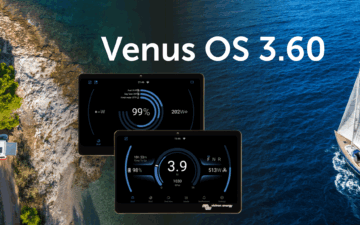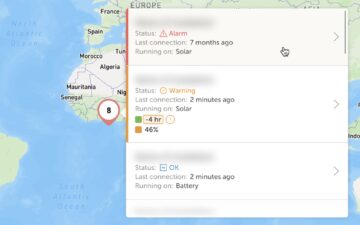
Good morning!
Last night we released v1.51. A short release this time, containing two new features and one fix.
Integrated Hub-1 for VE.Direct BlueSolar MPPT Charge Controllers
With this new feature the Color Control operates as a communication bridge between Multis, or Quattros, running the Hub-1 Assistant, and Solar chargers with a VE.Direct port. It is no longer necessary to configure the absorption and float voltages in the MPPTs higher than the same in the Multi: the Multi now has full control over the MPPT. To maximize feed-in, it will tell the MPPT to keep operating at its Maximum Power Point, even though the batteries don’t need more charge.
Which is the same functionality that was already possible with our VE.Can enabled solar chargers, using the VE.Bus to VE.Can interface cable.
UPDATE 2018-07-13: Note that most use of Hub-1 is now deprecated, in favour of ESS.
Bit of background
Let’s shortly recap what Hub-1 is, and why communication between a Battery Inverter/charger and an MPPT Solar Charger is a nice feature:
Solar chargers will normally reduce their power when the batteries become full. Otherwise the battery would be over charged.
In an on-grid systems you don’t want the solar charger to throttle back. Instead of reducing generated PV power, the system needs to prioritize it as the source to power the AC loads. There by reducing power draw from the mains. And, for certain countries, sell the rest of the available PV energy to the utility provider.
To achieve this, the solar charger needs to keep operating at its maximum power point. While the Multi takes all available power that is not needed by the battery. And invert it into AC to power loss and sell it back.
Tech details
- Works with all VE.Direct Solar Chargers fitted with a VE.Direct communication port
- The solar charger needs to run firmware version v1.17 or newer. To update your MPPT, use VictronConnect and a Bluetooth dongle or VE.Direct to USB cable. Today(!) we have released a new VictronConnect version that auto installs v1.17. This is Victronaconnect version v1.6.
Added Russian
See the headline image, we have Russian! No one in our Dutch offices can read that though. And it appeared that the translator that made these translations doesn’t know the difference between an inverter and a solar charger…
Luckily this was spotted in time by Georgiy Shatalov from our Russian distributor Vega. Thank you for improving the translation!
Hub-4 bug fixed
Large steps in the load could cause the Multi to start charging or discharging at full power. Which is now fixed. Note that this change sets the minimum VE.Bus firmware version to be used in a Hub-4 system to 404.
Note that we have also released VE.Bus firmware version 408, which fixes a similar issue.
Most systems will work fine as is. But in case you do have similar issues, especially in systems with large loads, updating both the CCGX and the Multis or Quattros to their latest releases.
Installing the update
By default, a CCGX will automatically download and install new firmware via the Internet, as soon as there is a new version available. For a manual update, follow instructions here.
Best regards,
Matthijs Vader














